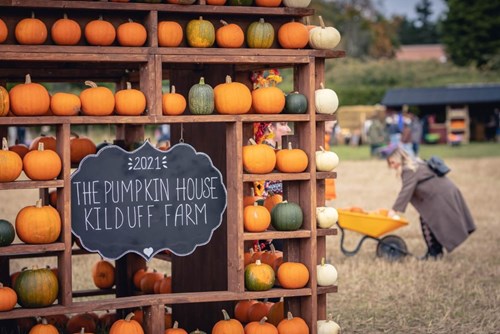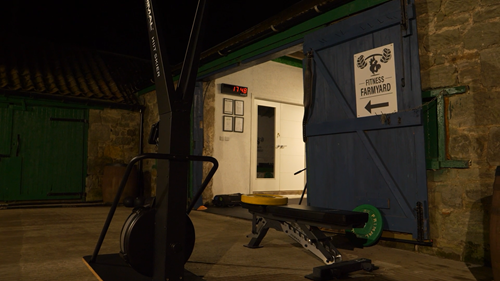Diversification: Adding Value to Personal and Physical Assets

There can often be a misconception in agriculture that the term ‘diversification’ means Agritourism. While Agritourism continues to be a hugely successful sector in the rural economy, there are many more ways that you can add value to your business. Diversification also doesn't necessarily need to be consumer-facing. Some farmers and crofters value their privacy and may prefer to explore other land-based diversifications like micro electricity generation, hydro schemes, hosting mobile phone masts, or renting out redundant shed space as commercial offices. Other ideas may include setting up dog parks, secure storage, or growing alternative crops like rye or hemp, which may fit their arable crop rotations. Some farmers love the opportunity to engage with the public and add value to their own or their family’s skillsets, interests, or passions. Whether that’s photography, arts and crafts, music, health and wellbeing, retail or hospitality, children’s education, sport and fitness coaching, among others, are all enterprises which can be both personally and financially rewarding.
Income from Farm Diversification
The Scottish farm business income: annual estimates 2022-2023 highlights the continued importance of diversification for farm business profitability. The gap in overall farm business income between the average farms with and without diversified activities widened to £38,300. The overall income of farms with diversified activity increased by 24%, 2 percentage points more than the increase in income of farms without diversified activities. In 2022-23, 59% of farms surveyed had at least one diversified activity with the average income generated totalling around £9,900.
In today’s economic landscape, many farmers and crofters are looking for low-cost enterprises which can generate additional income streams without significant start-up costs or labour input. Low-cost options might include beekeeping, small-scale pick-your-own fruit or veg, or hosting creative workshops/classes using your farming landscapes. Succession planning has also come to the forefront of our minds recently, and I believe that diversification and succession planning can go together.
The Next Generation and Diversification
Succession planning, much like diversification, is a long-term strategy within farm business management. By involving the next generation in diversification, you can not only strengthen your business by bringing new skills, experience, and perspectives, but also create a proactive approach towards succession planning that engages and empowers the whole family.
Diversifying can create new opportunities for family members who want to get more involved in your farm business but perhaps there isn’t currently a role for them, or maybe the farm isn’t financially able to provide for another person or family. Diversifying can be one solution and encourage the next generation to drive an enterprise that they are interested in, gain experience and build confidence, which ultimately will benefit the wider farm business in future.
In my experience, the next generation are ambitious, creative, and bring new perspectives on things which can really benefit your business. Afterall, starting a conversation with your family about diversification can be a lot easier than a conversation about succession!

If you are considering the most suitable diversified enterprises for your farm or croft, here are some practical steps to guide you:
- Start by asking yourself - Do you want to engage with the public on your farm or croft? This will determine whether a consumer-facing or land-based enterprise is right for you and your personal circumstances.
- If you would like to pursue a consumer-facing enterprise, write down a list of three to five interests you have, or someone in your family, have out with farming. Photography, arts and crafts, training sheepdogs/gundogs, floristry, sport and fitness, yoga, clay pigeon shooting, horse riding, to give a few examples.
- Do a skills audit. What skills or knowledge do you, or someone in your family, have that could align with a new diversified enterprise? Are you creative? Do you love engaging with people? Do you have any professional qualifications, certificates, or accreditations? A skills guide for rural industries is available for more guidance.
- Consider the physical assets on your farm. Do you have a beautiful view with lochs, woodland, or trails, which might be suited to adventure sports, leisure, or tourism?
- Do you have underutilised or redundant shed space/outbuildings that could be rented out, used as commercial office space, or secure storage? Do you have machinery or equipment which isn’t fully utilised all year round that could generate income through contracting? Could your land be suited to micro electricity generation, or other utility services? Could you introduce a secure dog field, or a community garden/allotment?
- Once you have narrowed down some options, then do more detailed market research. Depending on the options you’ve highlighted, you should consider doing a competitor analysis, gap analysis, understand the legislative requirements, planning permission, insurance, health and safety, industry qualifications, contractual obligations, along with completing partial budgets to understand the capital investment required, cash flow, and potential return on investment.
If you're aiming to boost profitability, engage the next generation, enhance the value of your personal or physical assets - or a combination of all three - please get in touch.
Calum Johston, Senior Consultant,Calum.Johnston@sac.co.uk

Unearthed is the exclusive SAC Consulting members' monthly newsletter. Unearthed offers insights and tips from our experts on what we think is in store for farming and crofting in the coming months in order to protect and enhance your business.
Posted by Unearthed News on 13/02/2025
